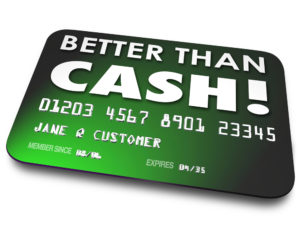How much will your exit timing be affected by the global economy? Most small businesses serve local markets. Their owners, if they have thought about it, plan to sell to a local individual. If the local market is healthy, why worry about the rest of the world?
A few weeks ago I attended a presentation by Austan Goolsbee, former Chairman of President Obama’s Council of Economic Advisors and the youngest member of his cabinet. Dr. Goolsbee was also a college champion debater (he beat Ted Cruz in the national finals) and a member of an improv troupe. That makes him an anomaly in the “dismal science;” a funny economist.
“We are only doomed in the short run.”
Here is a partial list of why he feels the economy will continue on this slow-growth path for some time, and some of the logic (including laugh lines) he used for each.
- Home prices have returned to their normal annual growth rate (.4%) of the 90 years prior to their run-up. (From the Onion: “Furious Nation Demands New Bubble to Invest In.”)
- Oil doesn’t have the effect it once did. Fuel efficiency has dropped its impact to less than half the percentage of GDP of 20 years ago. Falling gas prices used to be a boost to the economy. Now that we are a major producer, not so much.
- The administration is trying to boost consumer spending. The problem is that in the early 2000s Americans were spending more than they made. Now they have returned to their (fairly minimal) savings habits.
- Europe is circling the event horizon of an economic black hole.
- Epic job growth (4.5%) is being countered by shrinking productivity in the last few years, resulting in a “stagnant” economy.
For those that expect a stimulus from China’s growth, Goolsbee points out an interesting item.
 The USA publishes it’s GDP growth statistics one month after the end of a quarter, with adjustments over the next few months. China puts out the number on the last day of each quarter, and never updates it. As Goolsbee says, that causes economists to wonder, “Why do they wait so long?”
The USA publishes it’s GDP growth statistics one month after the end of a quarter, with adjustments over the next few months. China puts out the number on the last day of each quarter, and never updates it. As Goolsbee says, that causes economists to wonder, “Why do they wait so long?”
Does this affect small business?.
How does this big picture information impact the exit timing of a small business owner?
Exiting is a liquidity event. You are exchanging the equity value of your work for cash. The cost and availability of cash in the financial markets has a lot to do with who is able to buy your business and how much they will pay.
For the last ten years of Quantitative Easing, the markets have been awash with cash. Low deposit rates led many investors to seek higher returns. Private equity groups not only found plenty of investors, but could also leverage their purchases with debt at a relatively low cost.
As the PEGs push towards ever-smaller opportunities, a trickle-down effect has propped up pricing on the lowest (small business) end of the market. Professional investors are flocking to privately held companies. Perhaps they’ve found a new bubble to invest in.
I speak nationally about the coming of the Boomer Bust; the buyer’s market for small business. ( To receive free advance excerpts of my new book on this topic, go here.) According to the demographics, it should be starting already. It appears that the financial markets are hot enough to support prices for those who are exiting now, but demographics are like gravity. You may not like it, but you can’t change it. The flood of exits will come.
Your exit timing is a personal decision, but don’t make the mistake of thinking it’s only a personal decision. The domestic financial markets, which are influenced by the global economy, will have a material effect on your selling price. Keep one eye on the bigger picture. It could make a material difference in your retirement funding.
Please share Awake at 2 o’clock with another business owner. Thanks for reading!
 In a competitive credit environment, advertising for the revolving charge cards was directed to the pleasures of paying for something after you already enjoyed the use of it. The struggle of saving for a long time before purchasing was portrayed as foolish and unnecessary. In the 1980s and ’90s Baby Boomers on the quest for material success embraced the concept wholeheartedly.
In a competitive credit environment, advertising for the revolving charge cards was directed to the pleasures of paying for something after you already enjoyed the use of it. The struggle of saving for a long time before purchasing was portrayed as foolish and unnecessary. In the 1980s and ’90s Baby Boomers on the quest for material success embraced the concept wholeheartedly. For many, the business is a part of them. Shutting it down would be like having a piece of you die.
For many, the business is a part of them. Shutting it down would be like having a piece of you die. Selling to employees requires legal agreements, specialized compensation plans and a willingness to run the company transparently. The return is a team that is committed to the long term, highly motivated, and all on the same page when it comes to growing the business.
Selling to employees requires legal agreements, specialized compensation plans and a willingness to run the company transparently. The return is a team that is committed to the long term, highly motivated, and all on the same page when it comes to growing the business. Exit planning is the process of developing a business owner’s strategy for what may be the biggest financial transaction of his or her life…the transfer of the business. That strategy may be a succession to the next generation of family. It could be a sale to employees. It may be a sale to another entrepreneur, or acquisition by a larger company. In some cases, it could require an orderly dissolution.
Exit planning is the process of developing a business owner’s strategy for what may be the biggest financial transaction of his or her life…the transfer of the business. That strategy may be a succession to the next generation of family. It could be a sale to employees. It may be a sale to another entrepreneur, or acquisition by a larger company. In some cases, it could require an orderly dissolution.